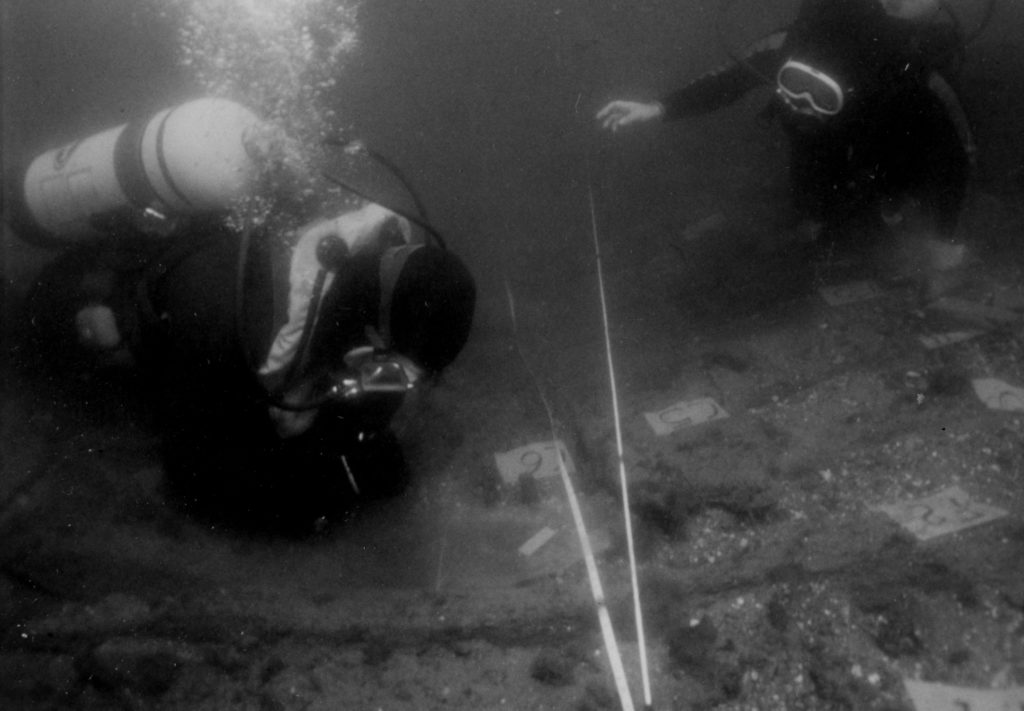During September and October 2012, IMH plans to continue an underwater reconnaissance in the Delaware River for several American warships and one British warship that were sunk in 1777. Our work will support the efforts of Andrew Doria – The First Salute, Inc., to build a replica of the brigantine Andrew Doria, one of the vessels lost. She was one of the first four vessels purchased by Congress for the Continental Navy in 1775. The project will be coordinated with the State of New Jersey and the U.S. Naval History and Heritage Command.
On our way to the Delaware and back we will also reconnoiter 88 possible shipwrecks in the Chesapeake Bay for the Maryland Historical Trust (MHT). Five of the sites are in the Potomac, and 83 are in the Bay. We have scanned many of them in prior transits, but have only dived a few. Many of them may never have been dived. The sites lie along 147 miles of transit from Tall Timbers MD to the C&D Canal. Site data will be reported to MHT and nobody else.
Scanning will employ IMH’s hard-mounted sidescan sonar. When conditions and manpower allow, we will also use a Marine Sonic Technologies “Splash Proof PC” sonar on loan from the National Park Service. The Marine Magnetics “Explorer” magnetometer that was used in the first part of the project in April and May 2012 is not currently operational, but we will use it if it is repaired in time. Participants can gain as much “scope time” as they want.
Targets selected by MHT will be dived by IMH volunteers, manually mapped, and scanned with metal detectors. To maximize volunteer participation, those dives would be conducted on weekends and clustered geographically to meet divers. The transit schedule would be adjusted to suit. The project depends on IMH receiving funds to work in the Delaware River. The Chesapeake work could then be performed along the way at minimal cost to participants.
Participation requires the usual diving waivers plus your agreement not to disturb sites, not to move or remove anything, and not to tell anyone outside the project where we went or what we found. “No take, no talk.“
The tentative schedule is to depart Tall Timbers on 17 September, scan the Chesapeake sites 17-21 September, work the Revolutionary War sites 22-30 September, scan some Delaware Bay sites 1-6 October, show the IMH flag at Coast Day at Lewes on 7 October, work with the University of. Delaware for a few days to map a large shipwreck at Cape Henlopen, and dive the Chesapeake sites from (say) 10 October until Hallowe’en.

